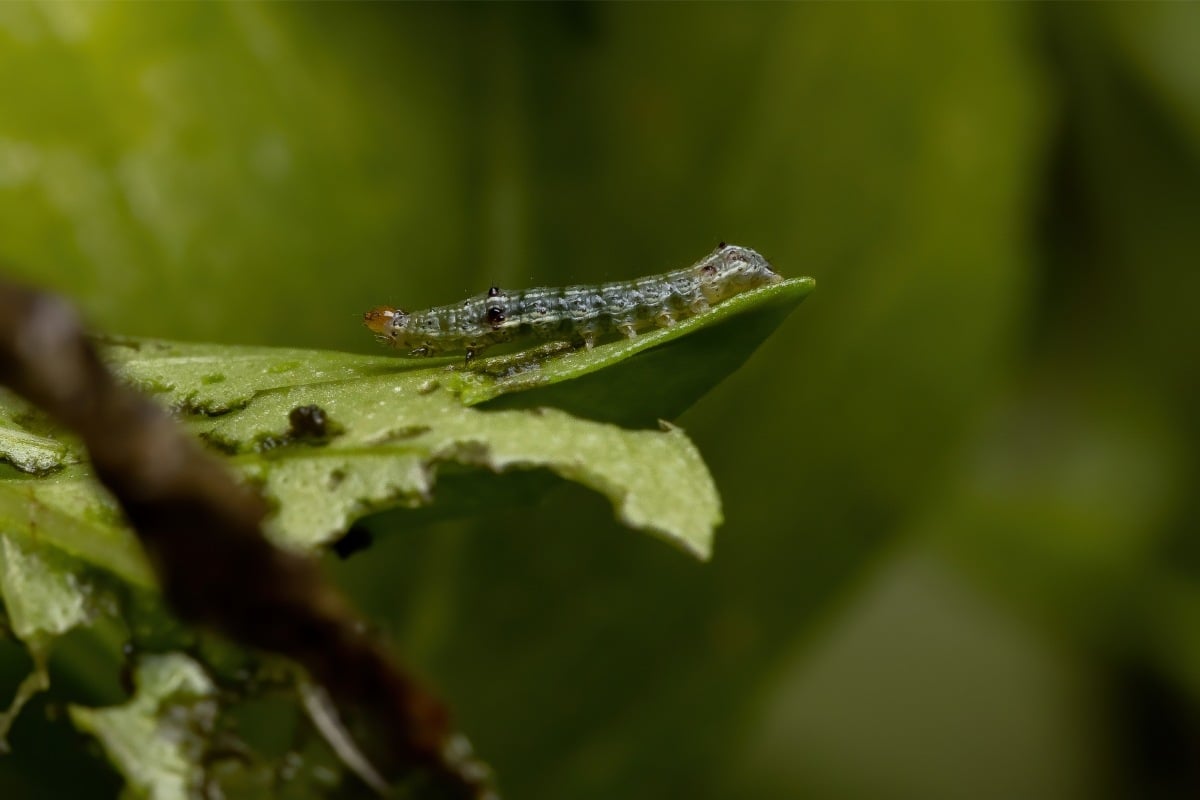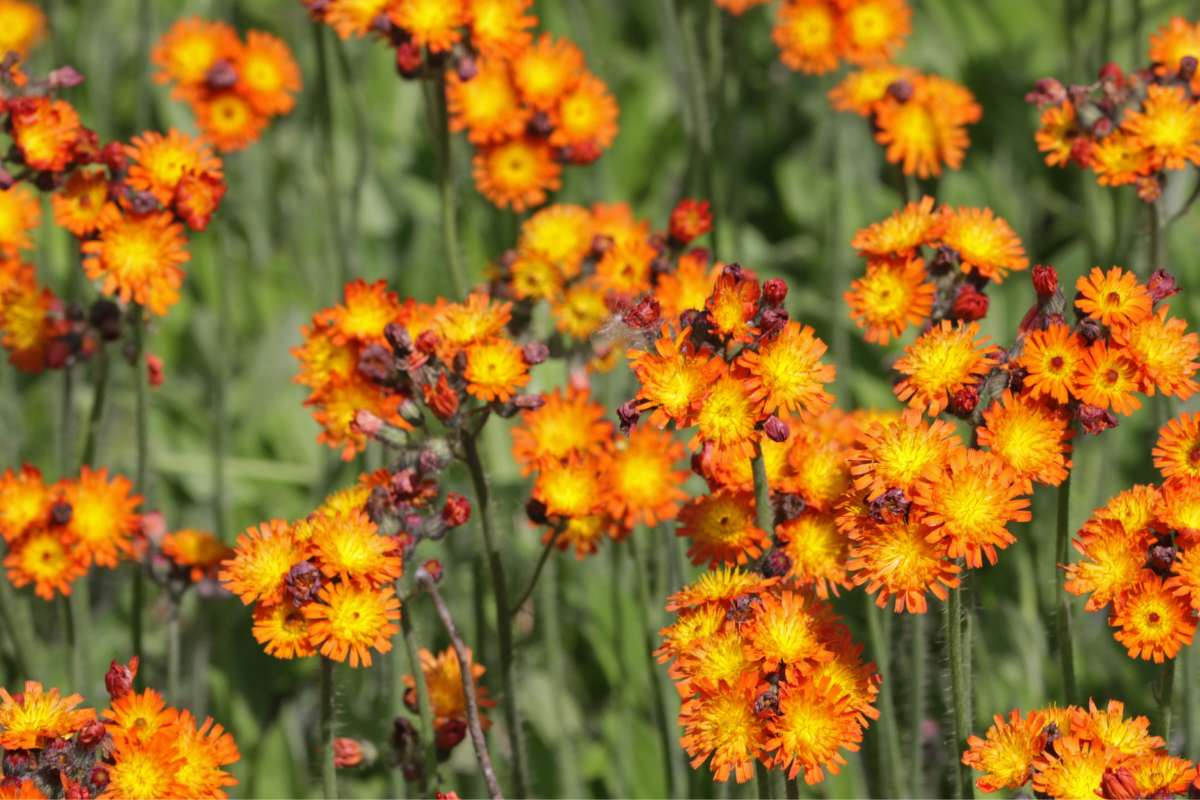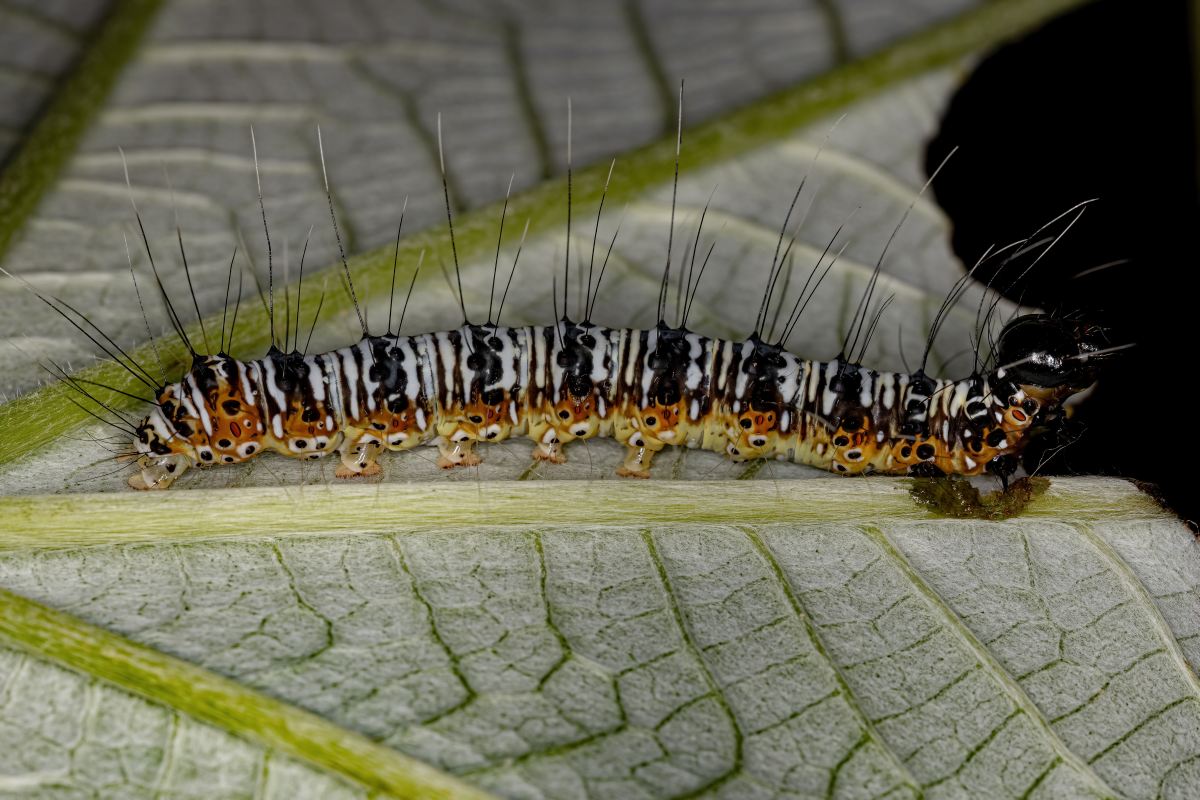
Ah, cutworms…the bane of many gardeners’ existence. Cutworms are the tiny, wormlike larvae of many different species of moths, and they’re pests to lawns, veggies, and flowerbeds alike. They mainly feed on the stems of young plants, but some also destroy foliage, roots, and other parts of the plant. In all cases, cutworms can devastate new seedlings.
Let’s delve into the world of these pesky lawn pests and learn a bit more about cutworms. After all, knowing your enemy is the first step to defeating it.
A Closer Look at Cutworms
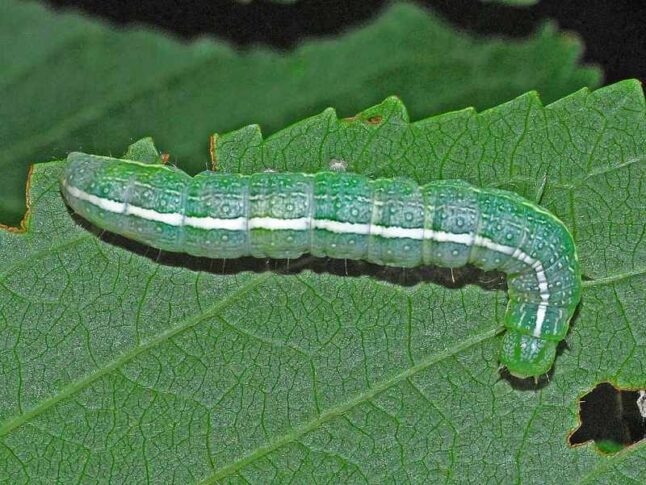
Cutworms are actually not worms but larvae of more than 200 different types of moths, most of which are in the Noctuidae family. While the adult moths are harmless, they feed voraciously on plant stems as caterpillars.
Cutworms go through many different stages of growth, from larvae (aka caterpillars) to hard, pill-shaped pupae and finally to full-grown adult moths. Gardeners really only need to worry about the larval stage, however. The worst thing an adult cutworm moth can do to your lawn or garden is lay eggs and continue the cycle.
Positively identifying cutworms can be tricky, as different species vary in size and color. Most measure up to an inch long, and they can be yellowish, green, or brown. They sometimes have striped markings down their backs. But they all have one thing in common: munching on young, vulnerable plants and grass.
The Life Cycle of Cutworms
When should you be on the lookout for cutworms in your lawn and garden? To know that, you have to understand the timing of their life cycle.
Cutworm caterpillars typically emerge from the soil to start eating your plants in spring after overwintering deep underground as eggs or small larvae. Look for signs of their damage – including wilting plant leaves and thinning turf – during this time.
The larvae will continue munching on your plants until they’re done maturing, usually sometime in June. At this point, they burrow back into the soil to enter the pupal stage underground. They re-emerge as adult moths around August or September.
These adult moths then proceed to lay eggs at the base of weeds, on grass tips, or in piles of plant debris. The eggs will overwinter in the soil, and the whole cycle will start over again next spring. While most cutworm species go through this cycle only once per year, some have three or four generations every year.
Feeding, Hiding, and Other Habits
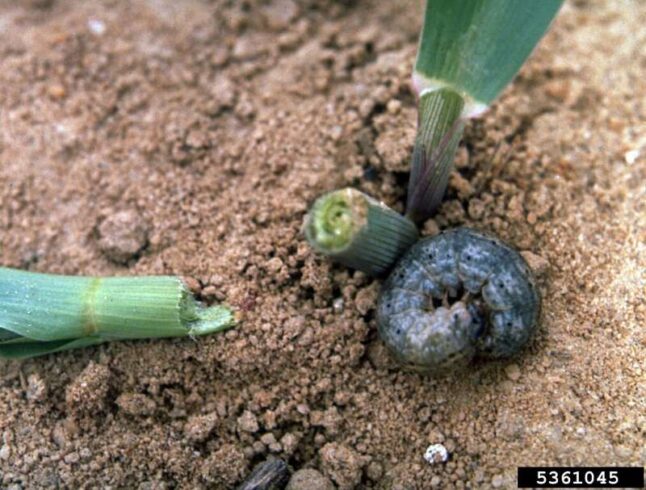
As their name suggests, cutworms are known for their habit of “cutting” down seedlings and leaving them completely destroyed. And while some cutworm species will feed on plant stems and leaves, others prefer to take a subterranean route and feed on the roots of their host plants.
Depending on the species of cutworm, they’ll either remain with the host plant and feed on it or quickly move on after a few bites. This particular habit is what renders the cutworm particularly destructive and troublesome.
Most cutworm larvae feed mainly at night. When the sun begins to rise, they’ll start to look for good hiding places deep in the soil or under leaf piles where they can spend the day safe and sound from natural predators. So, don’t expect to see them out in the open during the day.
Telltale Signs of Cutworm Infestation
Unless you have eagle eyes, it’s not likely that you’ll spot a cutworm in your garden or lawn during the day.
However, there are other signs that can help you identify a cutworm problem:
- Wilting grass or young plants in spring: While many different things could be the cause of wilting grass or plants, cutworms are a logical explanation. If you can’t think of any other reason your landscape might be suffering in spring, check the soil for cutworms.
- New damage to plant leaves or stems in the morning: Since cutworms feed at night, you should notice fresh damage each morning.
- More birds than usual scratching and pecking around your lawn: Flocks of birds will often find their way to a lawn with lots of cutworms to feed on them. Let them! Birds are one of the best natural pest control agents for landscapes.
- Droppings on the ground near damaged plants: If you notice tiny black droppings on the soil surface near a damaged plant, this could be an indication of cutworms.
Types of Cutworms
North America isn’t short on its variety of cutworms. Here are the most common species of cutworms you’re likely to encounter in your garden:
- Black Cutworm – Dark in color, with brown to black spots running the length of their back and sides
- Variegated Cutworm – Ranging in color; can have a pale white line and/or yellow dots along their backs
- Army Cutworm – Dark brown with a large lighter brown stripe down the middle of their backs (not to be confused with armyworms)
- Bristly Cutworm – Brown, with stripes down the back in various shades of brown and tan
- Bronzed Cutworm – Dark brown to bronze with three yellow stripes down the back
- Claybacked Cutworm – Also known as the swordsman dart; light grey with a brown head
- Clayhill Cutworm – Green-colored cutworm; found mainly in locust groves and woodlands
- Dingy Cutworm – Light gray with four black dots on the dorsal surface of each abdominal segment
- Pale Western Cutworm – Greyish white or green body with a yellowish brown head
How to Control Cutworms
The best way to control cutworms is to keep them from settling in your garden in the first place. You can prevent them by removing weeds and cleaning up plant debris in a timely manner, putting up birdhouses and feeders to attract these natural predators of cutworms, and avoiding planting any new seedlings in spring when cutworms are active.
If there are already cutworms in your lawn or garden, you can get rid of them with mechanical methods, such as putting plant collars around your plants or tilling the soil, or with pesticides such as spinosad, diatomaceous earth, or chemical treatments.
For an in-depth look at methods for controlling cutworms, see our article on how to get rid of cutworms. It covers all your natural and synthetic cutworm control options.
FAQ About Cutworms
Yes, moles feed on cutworms, but moles are also known for their digging habits, which can cause considerable damage to a lawn or garden. You may want to get rid of moles, too, for your lawn’s health. Birds, another natural predator of cutworms, are much safer for your lawn.
Heterorhabditis bacteriophora and Steinernema carpocapsae are two species of insect-attacking nematodes that can help get rid of cutworms. You can find these species of nematodes at commercial nurseries or specialized mail-order suppliers.
Cutworms have plenty of natural enemies, including parasitic wasps, predatory insects like beetles and stink bugs, birds, reptiles, and some mammals.
Bacillus thuringiensis (Bt) is a species of bacteria used to kill certain species of insects, including cutworms.
The protein toxins found in Bt are not toxic to mammals and have minimal effects on beneficial insects and natural predators, making them a great tool for pest control.
The gray or white worms that you may have noticed in your soil are likely grubs, not cutworms. Grubs are C-shaped worms and usually cream-colored, white, or grayish. They can cause considerable damage to your lawn or garden. For more information, learn how to kill lawn grubs.
Sometimes, Epsom salt is effective at killing soft-bodied insects such as cutworms and other caterpillars. However, you often need to sprinkle a large amount of Epsom salt around your plants for this pest control method to work, and that can kill your plants anyway. Also, Epsom salt as a pest control method has no scientific proof to back it up, and its results are inconsistent. Learn more in our article about using Epsom salt for cutworms.
Cut Out Cutworms ASAP
Our home gardens and outdoor spaces are meant to bring us joy and comfort, but a cutworm infestation can leave those precious lawns and gardens in tatters. Whatever kind of vegetation you like to grow in your landscape, there’s likely a cutworm species ready to target it.
If you’re not prepared to deal with cutworms on your own, LawnStarter can connect you with lawn care pros in your area to help protect your lawn and garden from these pesky pests. Let us help you find a cure for those cutworms and get back to your beautiful, thriving garden!
Main Photo Credit: Vinícius Rodrigues de Souza / Canva Pro / License


